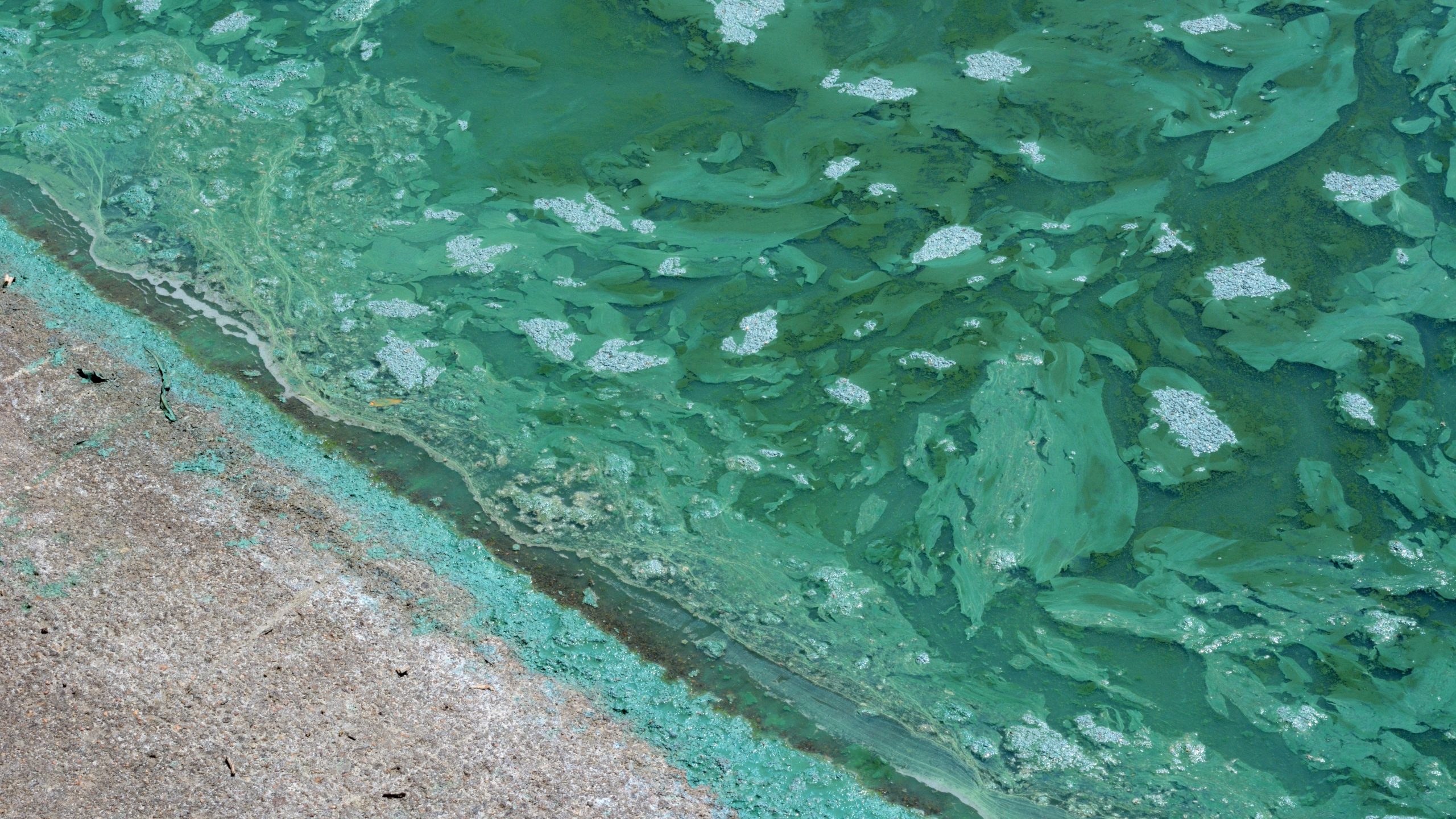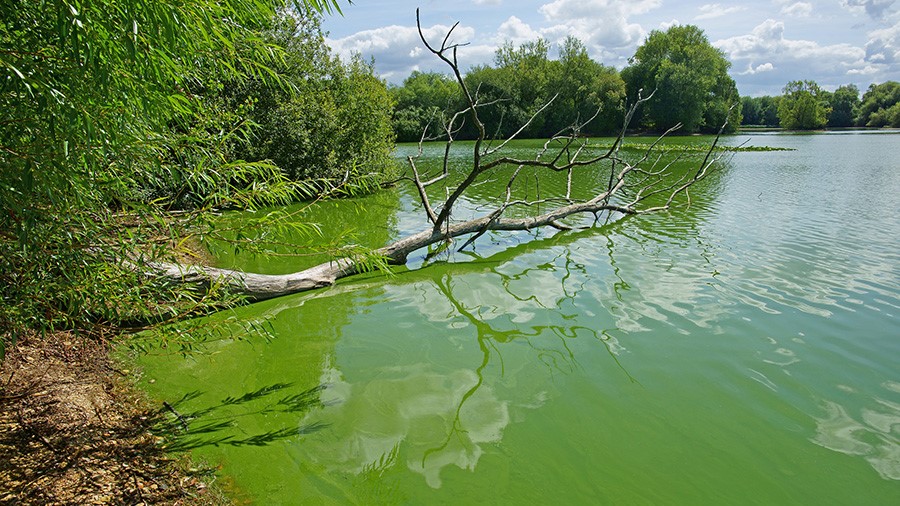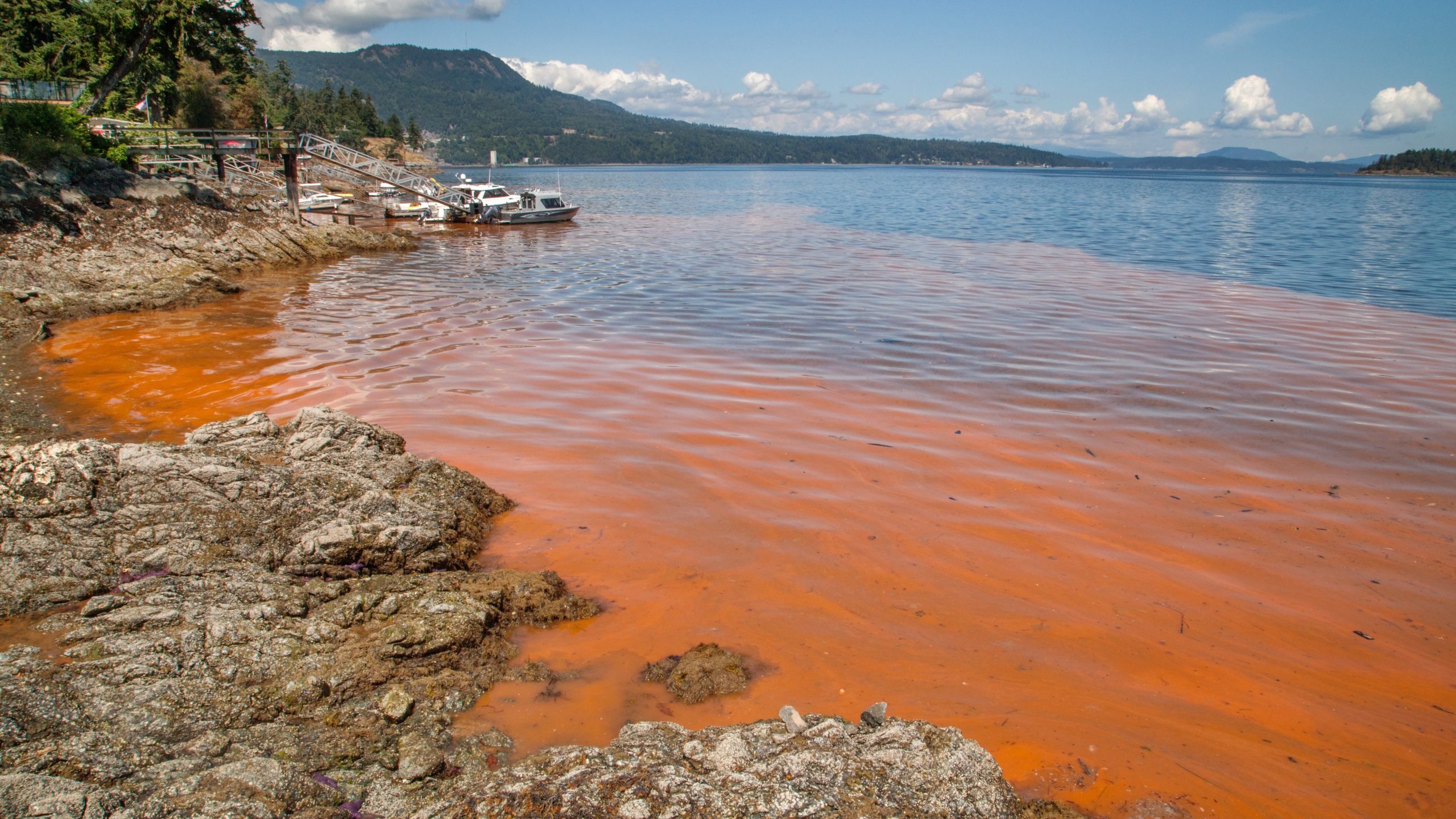BLOOMBERG – Beating the heat in the US is a little harder this summer than it used to be: E. coli and cyanobacteria are causing widespread beach closures at lakes and rivers.
It’s a problem exacerbated by climate change-fueled warmer waters and more prolific downpours, which are creating perfect conditions for bacteria to flourish.
“Blue-green algae poisoning occurs when dogs drink or swim in water contaminated by an algal bloom. Algal blooms are an overgrowth of cyanobacteria that can produce numerous types of toxins . The two most serious types of cyanotoxins , can cause liver or neurologic injury. Shock, liver failure, respiratory arrest and even death can occur.” – Cornell Canine Health Center
Bacteria tend to grow in warm conditions and between 1985 and 2009, lakes and ponds warmed at a rate of roughly 0.6F (0.3C) per decade.
That shift is increasing the risk of blooms in historically cold places.
The bacteria can cause a host of symptoms, including blisters, rashes, diarrhea, muscle weakness, and liver damage, to name a few.
Outbreaks can also tax ecosystems. … Even Lake Tahoe, famous for its pristine waters, showed signs warning of toxic algal blooms earlier this summer. While those concerns were a false alarm, the risk of a real outbreak hangs over the lake.
“There is no way to tell the difference visually if a particular bloom is toxic or non-toxic. If you suspect that there may be a possible cyanobacterial bloom, alert the public health authorities at your local or state health department.” – Cornell Canine Health Center
Algal blooms have become a growing issue in recent years, and dangerous toxins were detected in a pond on Lake Tahoe’s Nevada shores, though it wasn’t connected to the lake. …
Read the full story from Bloomberg.
Harmful Algal Blooms and Your Health
CDC – Algae and cyanobacteria (also called blue-green algae) are plant-like organisms that live in water. They can quickly grow out of control, or “bloom.” Some of these blooms produce toxins (poisons) that make people and animals sick.
What they look like
Harmful algal blooms can look like foam, scum, mats, or paint on the surface of the water. They can also grow underneath the water, making some harmful algal blooms hard to see.

When they’re harmful
Not all blooms are harmful. Blooms of algae or cyanobacteria can harm people, animals, or the environment if they:
- Make toxins
- Become too dense
- Use up oxygen in the water
- Release harmful gases
Types
Many different types of algae can cause harmful algal blooms. However, three types —cyanobacteria, dinoflagellates, and diatoms—cause most blooms that make people and animals sick.


Where they’re found
Harmful algal blooms can grow in fresh water, salt water, or brackish water (a mixture of fresh and salt water). This includes water people use for recreation and for drinking.
Harmful algal blooms occur across the world. In the United States, they have been reported in all 50 states, Puerto Rico, and the U.S. Virgin Islands.
What causes them
Algae and cyanobacteria occur naturally in water. They are more likely to grow into a harmful algal bloom when water is:
- Warm
- Slow-moving
- Full of nutrients, such as nitrogen or phosphorous
Nutrients get into water when fertilizer, sewage, or runoff from cities and industrial buildings washes into lakes, rivers, or oceans. This can happen during rainstorms, for example.
Environmental changes, such as warmer water, might be making harmful algal blooms worse.
Learn more about factors that help harmful algal blooms grow.
Health impacts
Harmful algal blooms cause a variety of mild to serious illnesses. Symptoms depend on the type of harmful algal bloom you come in contact with and how you are exposed.



